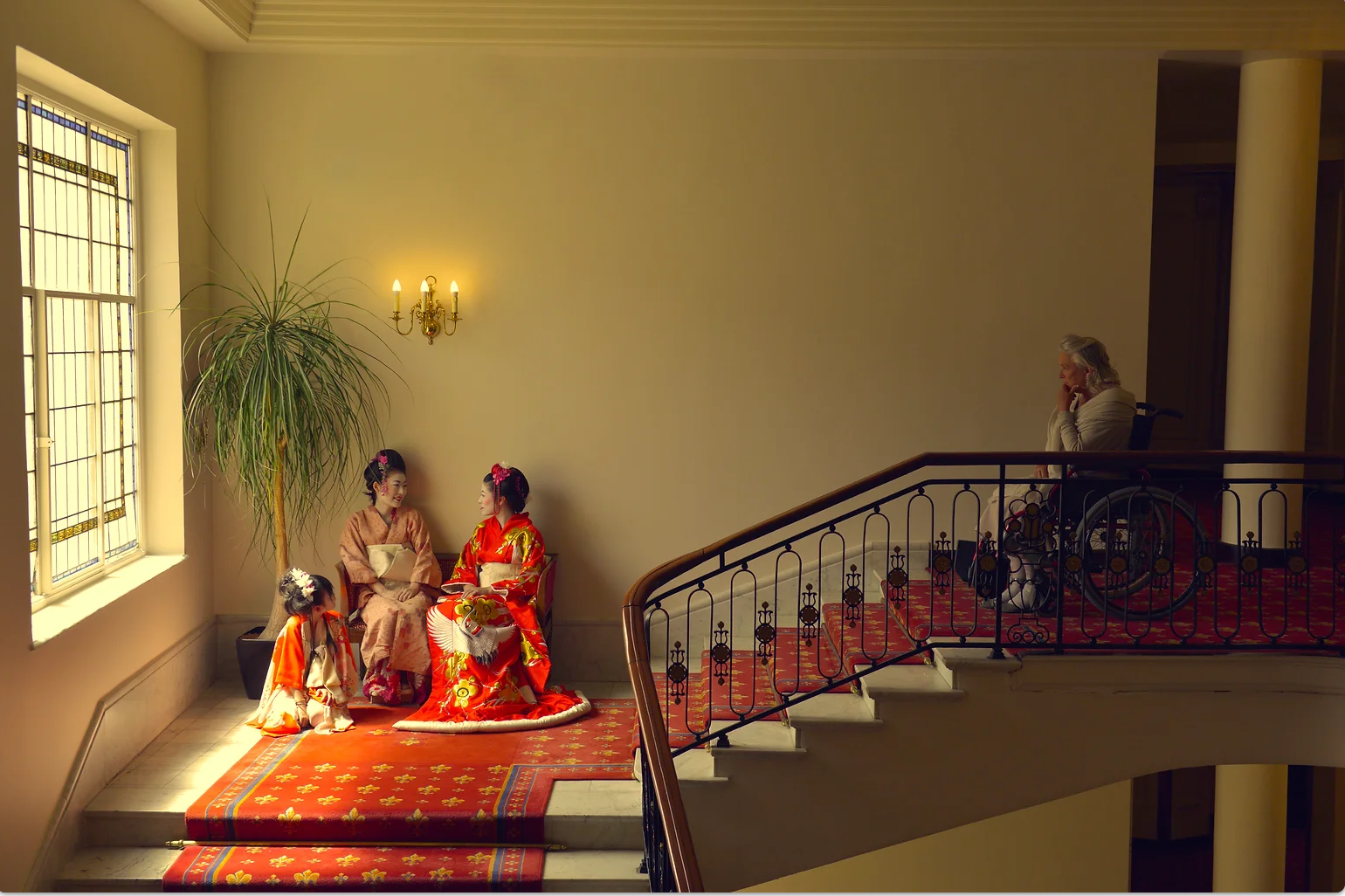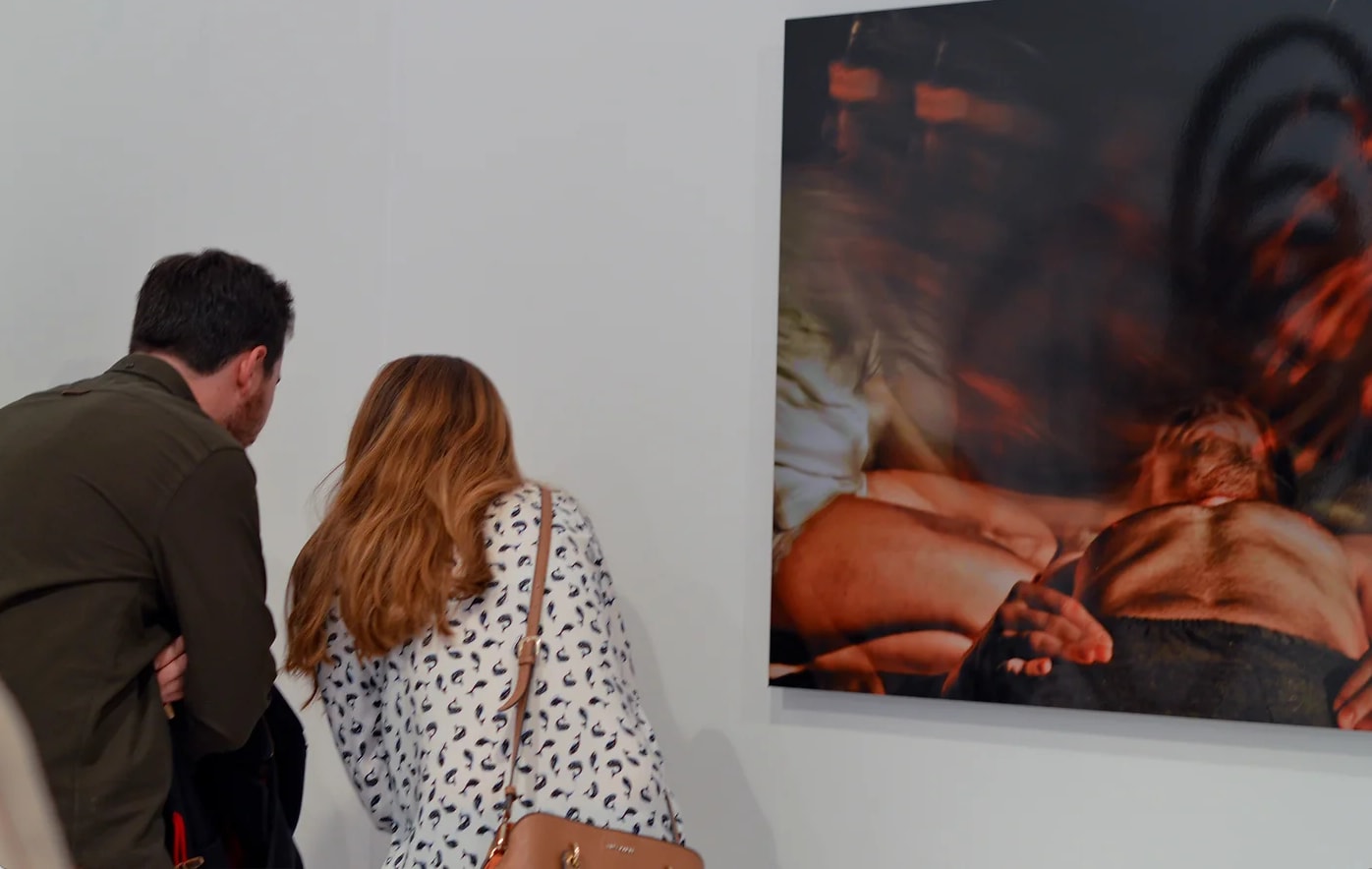This month an intriguing exhibition digs deep into dreams, fiction and reality, sleep disorders and the way art can help communities move forward with their understanding of certain medical conditions. Photography and other works at The North Wall, Summertown examines the similarities in dreams or hallucinatory patterns in people from different places and cultures and considers what this teaches us about our collective imagination.
 “Dr Amaia Salazar is a Spanish artist who uses a critical and analytical approach to investigate how different symbolic and emotional experiences deepen the study of human cognition. Interested in studying behavioural concepts from an anthropological, historical, and sociological perspective, her artistic point of view allows us to pinpoint the origins of our thoughts – from the moment they are perceived from our senses to the way our mind interprets and transforms them into behaviours, beliefs, and feelings,” says Nicky Laird, curator at The North Wall.
“Dr Amaia Salazar is a Spanish artist who uses a critical and analytical approach to investigate how different symbolic and emotional experiences deepen the study of human cognition. Interested in studying behavioural concepts from an anthropological, historical, and sociological perspective, her artistic point of view allows us to pinpoint the origins of our thoughts – from the moment they are perceived from our senses to the way our mind interprets and transforms them into behaviours, beliefs, and feelings,” says Nicky Laird, curator at The North Wall.
“Dreams, nightmares, illusions, and hallucinations are all part of our collective imagination, and concepts such as the magical, the mystical, the mysterious all have a scientific and historical basis that Amaia tries to deconstruct/reconstruct through art. She visually materialises certain intangible concepts and visual disorders, in order to recreate an understanding of the abovementioned emotional and cultural phenomena. To achieve this, she analyses experiences based on shared testimonies, with the aim of combining both objective and subjective perspectives. She seeks to create a new visual panorama which will enable us to delve into the understanding of common but little-known phenomena and give them visibility through art.”
The first half of the exhibition draws on the experience of people who suffer a sleep disorder called sleep paralysis and experience recurrent episodes of this parasomnia. “It’s that state between sleep and wakefulness when the person is conscious of being awake, but the muscles of the body keep them immobilised which often causes great distress,” explains Salazar. “As many as 50% of people have periods of this during their lives. This parasomnia usually produces different symptoms, the most common of which are visual, such as hallucination. I use photography to represent these experiences, both digital images and from a pin-hole camera, which I made myself and which will be on show as part of the exhibition.
Sleep paralysis is a conscious state in which you feel as if you are being watched. I try to show this sensation visually with images based on the testimonies collected, as well as my own subjective perspective, having suffered from it myself. It was a challenge to represent such volatile perceptions as a whisper or the sensation of a presence in the room. Some photographs are shown from a third person and others from a first-person point of view," she adds.
The testimonials of a sample of the 500 people whom Salazar interviewed for this project are displayed in a series of clinical tubes in an installation. “Open the tubes and read the stories that are behind the show. There will also be some blank paper and empty tubes so visitors can add their own experiences into the mix as part of the project” she continues.
“The visual arts are not only a great way to recreate a feeling and communicate it to others. They’re also helpful to the healing process for those who suffer the condition and for triggering conversations within both the community of sufferers and those who haven’t experienced it.”
 The second half of the exhibition focuses on Charles Bonnet Syndrome, in which visually-impaired people experience complex and lucid hallucinations. The condition was described by British neurologist Oliver Sacks, author of the classic psychology book of case-histories, The Man Who Mistook His Wife for a Hat.
The second half of the exhibition focuses on Charles Bonnet Syndrome, in which visually-impaired people experience complex and lucid hallucinations. The condition was described by British neurologist Oliver Sacks, author of the classic psychology book of case-histories, The Man Who Mistook His Wife for a Hat.
"This is a visual disorder that can transform fiction into reality and vice versa – people find it hard to distinguish between what is real and what is not, making their day-to-day lives difficult. The challenge was how to represent this visually and by doing so I hope to bring the artistic and scientific community together, to build awareness of how art can contribute to the understanding of science in the future, and how science can inspire artistic creation" says Salazar.
“Unmasking the Mind: Dreams, hallucinations, and other realities”
The North Wall 10 – 20 January
Book review
Oliver Sacks: The Man who mistook his wife for a hat
A classic work of psychology, this international best seller provides an intriguing insight into the human mind as Sacks recounts the stories of patients, delving into the lives of individuals with rare and often bizarre neurological conditions and bridging the gap between medical science and the human stories. Within the pages you’ll find people who can no longer recognise everyday objects or those they love; who are stricken with violent tics or shout involuntary obscenities, and yet are gifted with uncanny artistic or mathematical talents. Whilst strange and almost inconceivable to a neurotypical reader, these fascinating tales are a unique blend of scientific insight and compassionate storytelling and perhaps shed light on what it means to be human.









